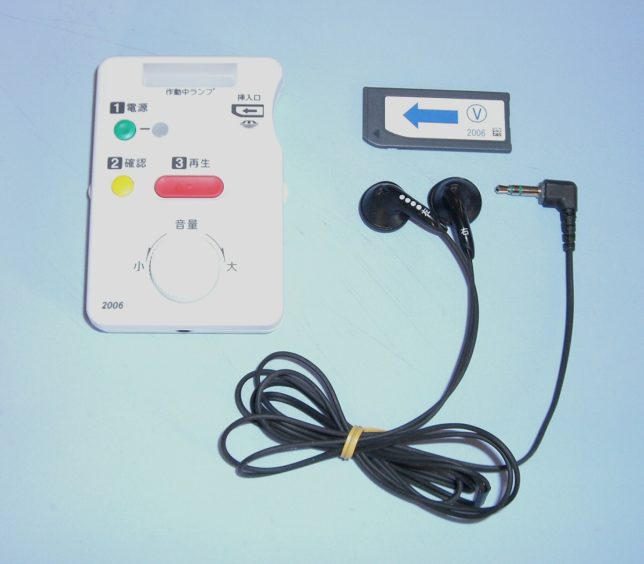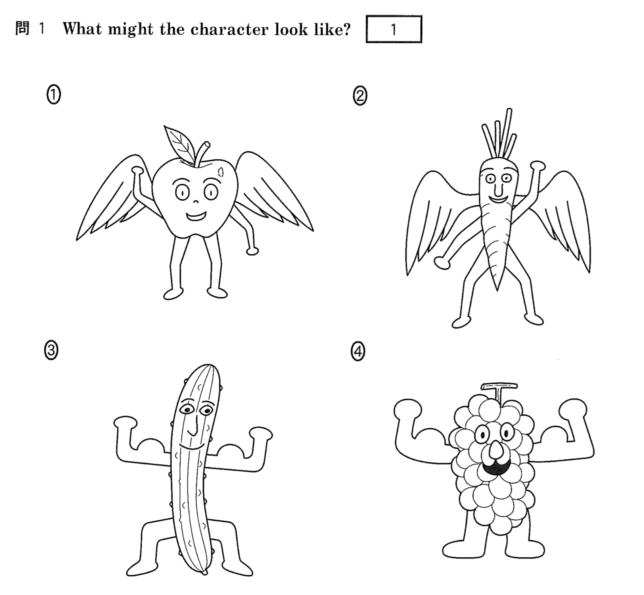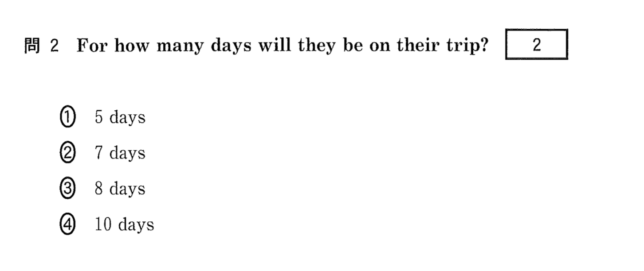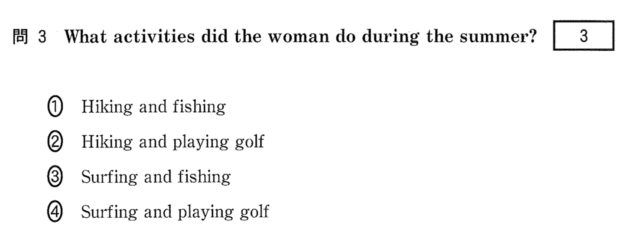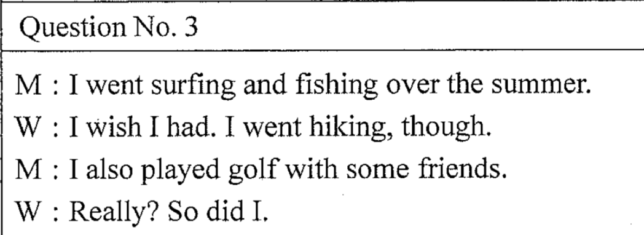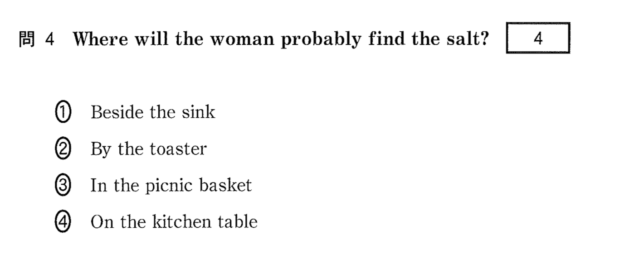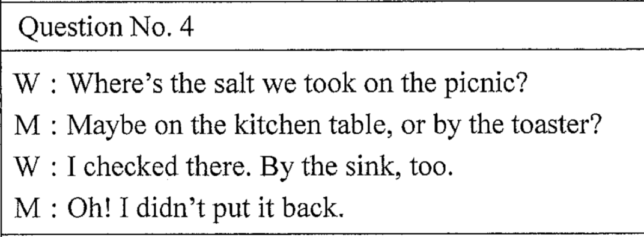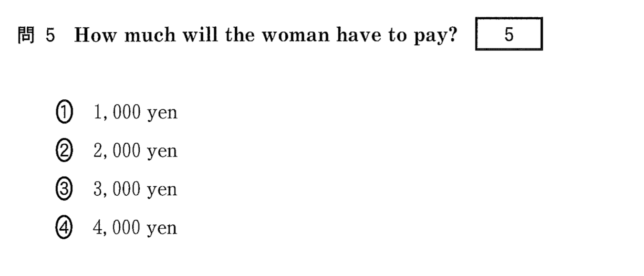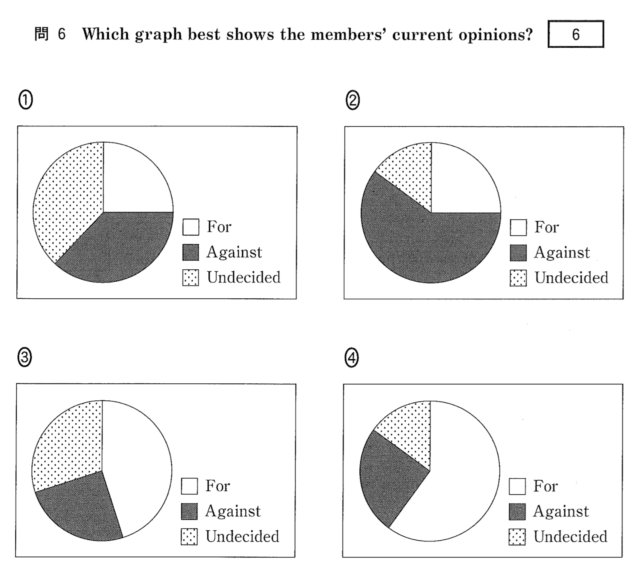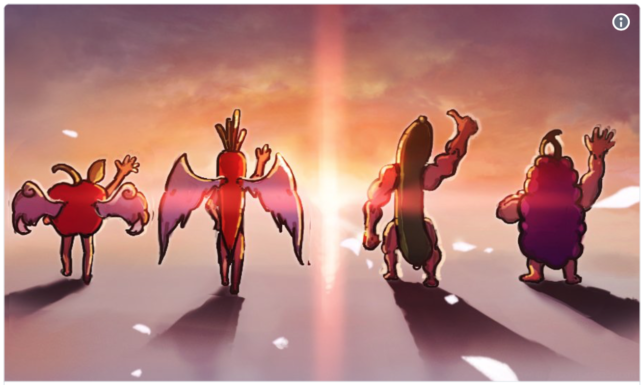Hello everyone,
Last weekend our grade three students went to Wakayama University to take the Center Test. The last test on the first day was the English listening test. The test is 30 minutes, and has 25 questions divided into 4 parts. Each student has earphones and an “IC Player” that uses an SD card for the listening. Even though they were tired from taking many tests on the day, our girls did their best. Let’s take a look at the part one questions today.
Question 1 – Easy!
This question should have been no problem! Fruit or vegetable, strong or wings. Many people commented on the art of this question. I like to think that the test makers knew students had some stress and wanted to relax them a little bit. The question definately had a “strong impact” for students. Of course your answer is…
This question should also have been simple for students. Adding the days in London to the days in Vienna gives you the answer, 8 days. The question says “For how many days…” which is a little different than the usual “How long will…”. Also, the cities Vienna and Istanbul are not as well known at Tokyo, London, or New York, so that may be different for students. Quick, without checking, what countries are those cities in?
Question 3 – Easy!
This is another pretty easy question, but there is a trick to it. Students read the question carefully to know that they want the woman’s activity, and not the man’s. However, they need to also listen to the man’s activities, because the woman reacts to his story by saying “I wish I had.” and “So did I.” Hiking and golf seems like a good vacation!
Question 4 – Medium
When I have a picnic I never take a salt shaker, I just put some salt in a small paper and twist it! Anyway, for this question you find the correct answer by taking out the other three. When the man suggests the kitchen table and toaster, and the woman says she checked those places and the sink as well, you know the answer must be “in the picnic basket”.
Question 5 – Getting harder…
This is another calculation question like number 2, but this time students have to calculate both time and money. “Hourly rate” means money per hour, and students also need to connect “12:00” with “noon”. Once they do that, they can multiply the rate by the time. 2 hours x 2,000 yen = 4,000 yen. This is a question where notetaking is very important. Keep your hands busy taking notes while you listen, so if you need more time to find the answer, you can go back and see what you wrote.
Question 6 – AHHH! GRAPHS!!
No one likes graph questions. Graph questions are difficult because your eyes are looking for information while at the same time your ears are listening for information. Double input is difficult. On top of that, there are some more difficult vocabulary in the script, such as “proposal”, “majority”, and “persuade”. After the first sentence, you can cross off number 2 and 4, because the “For” part is larger than the “Against”. Then, when the students know that it is possible to get a “For” majority, they know that the answer is number 1.
After all of that, students still had 20 more minutes and 19 more questions to go. Phew! A long day for everyone, but I am sure you did your best. See you next time.

